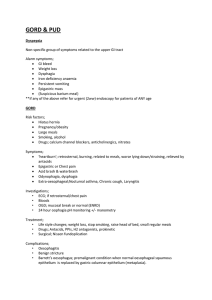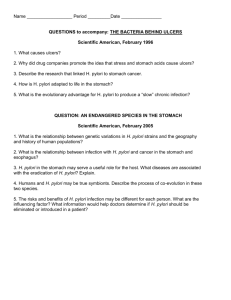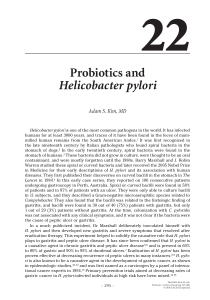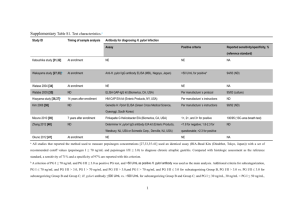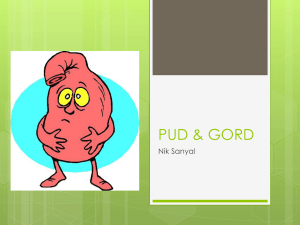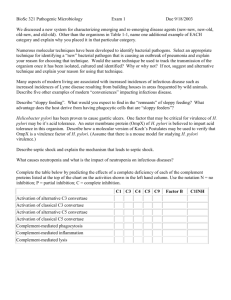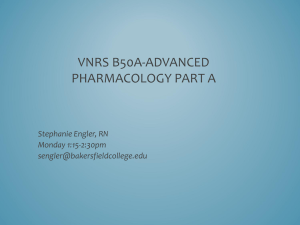Helicobacter pylori
advertisement
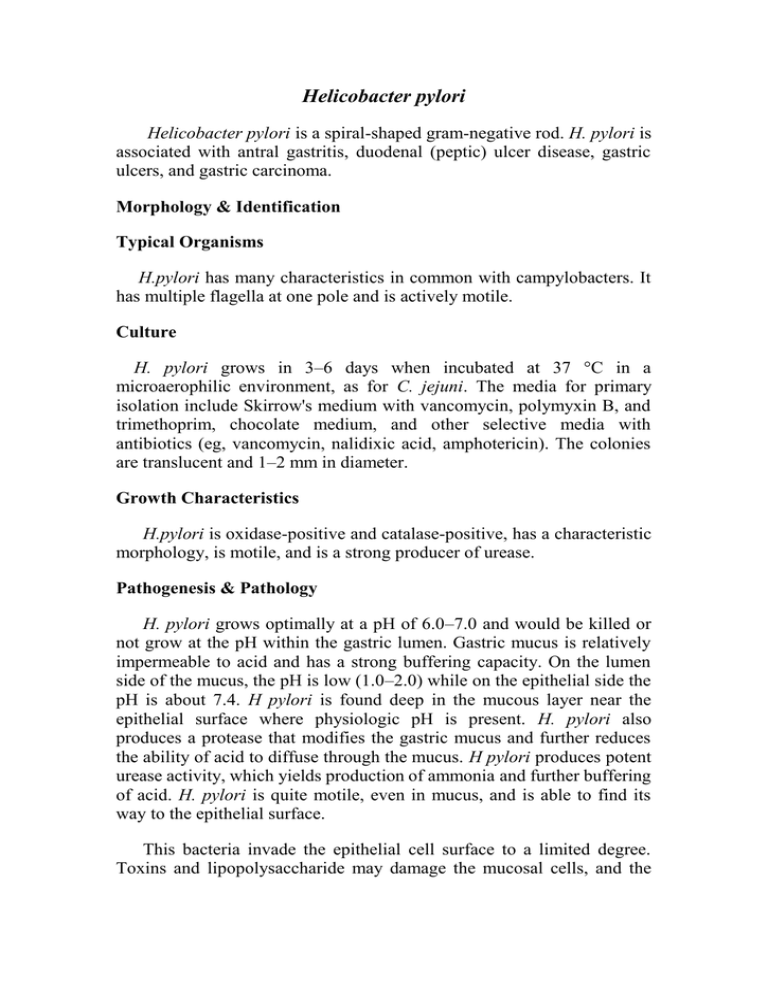
Helicobacter pylori Helicobacter pylori is a spiral-shaped gram-negative rod. H. pylori is associated with antral gastritis, duodenal (peptic) ulcer disease, gastric ulcers, and gastric carcinoma. Morphology & Identification Typical Organisms H.pylori has many characteristics in common with campylobacters. It has multiple flagella at one pole and is actively motile. Culture H. pylori grows in 3–6 days when incubated at 37 °C in a microaerophilic environment, as for C. jejuni. The media for primary isolation include Skirrow's medium with vancomycin, polymyxin B, and trimethoprim, chocolate medium, and other selective media with antibiotics (eg, vancomycin, nalidixic acid, amphotericin). The colonies are translucent and 1–2 mm in diameter. Growth Characteristics H.pylori is oxidase-positive and catalase-positive, has a characteristic morphology, is motile, and is a strong producer of urease. Pathogenesis & Pathology H. pylori grows optimally at a pH of 6.0–7.0 and would be killed or not grow at the pH within the gastric lumen. Gastric mucus is relatively impermeable to acid and has a strong buffering capacity. On the lumen side of the mucus, the pH is low (1.0–2.0) while on the epithelial side the pH is about 7.4. H pylori is found deep in the mucous layer near the epithelial surface where physiologic pH is present. H. pylori also produces a protease that modifies the gastric mucus and further reduces the ability of acid to diffuse through the mucus. H pylori produces potent urease activity, which yields production of ammonia and further buffering of acid. H. pylori is quite motile, even in mucus, and is able to find its way to the epithelial surface. This bacteria invade the epithelial cell surface to a limited degree. Toxins and lipopolysaccharide may damage the mucosal cells, and the ammonia produced by the urease activity may directly damage the cells also. Histologically, gastritis is characterized by chronic and active inflammation. Polymorphonuclear and mononuclear cell infiltrates are seen within the epithelium and lamina propria. Vacuoles within cells are often pronounced. Destruction of the epithelium is common, and glandular atrophy may occur. H. pylori thus may be a major risk factor for gastric cancer. Clinical Findings Acute infection can yield an upper gastrointestinal illness with nausea and pain; vomiting and fever may be present also. The acute symptoms may last for less than 1 week or as long as 2 weeks. Once colonized, the H. pylori infection persists for years and perhaps decades or even a lifetime. About 90% of patients with duodenal ulcers and 50–80% of those with gastric ulcers have H. pylori infection. H .pylori also may have a role in gastric carcinoma and lymphoma. Diagnostic Laboratory Tests Specimens Gastric biopsy specimens can be used for histologic examination used for culture. Blood is collected for determination of serum antibodies. Smears The diagnosis of gastritis and H. pylori infection can be made histologically. A gastroscopy procedure with biopsy is required. Routine stains demonstrate gastritis, and Giemsa or special silver stains can show the curved or spiraled organisms. Antibodies Several assays have been developed to detect serum antibodies specific for H. pylori. The serum antibodies persist even if the H. pylori infection is eradicated. Special Tests Rapid tests to detect urease activity are widely used for identification of H. pylori in specimens. Gastric biopsy material can be placed onto a urea-containing medium with a color indicator. If H. pylori is present, the urease rapidly splits the urea (1–2 days) and the resulting shift in pH yields a color change in the medium. In vivo tests for urease activity can be done also. 13C- or 14C-labeled urea is ingested by the patient. If H. pylori is present, the urease activity generates labeled CO2 that can be detected in the patient's exhaled breath. Detection of H. pylori antigen in stool specimens is appropriate as a test of cure for patients with known H. pylori infection who have been treated. Immunity Patients infected with H. pylori develop an IgM antibody response to the infection. Subsequently, IgG and IgA are produced, and these persist, both systemically and at the mucosa, in high titer in chronically infected persons. Treatment Triple therapy with metronidazole and either bismuth subsalicylate or bismuth subcitrate plus either amoxicillin or tetracycline for 14 days eradicates H. pylori infection in 70–95% of patients.
